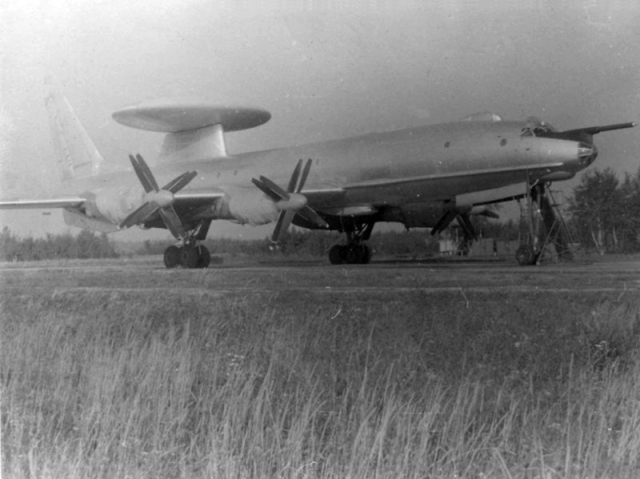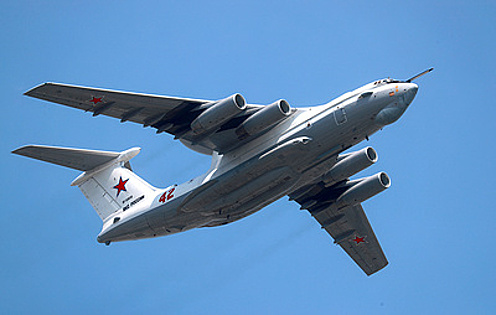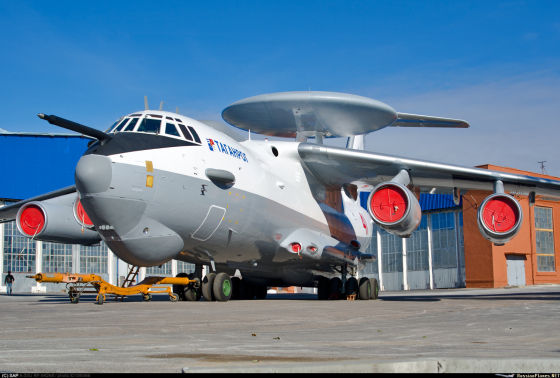The A-50U aircraft taking part in a special military operation will undergo another modernization. The A-50U is perhaps one of the strangest-looking machines, resembling a mushroom plane. At the same time, it is one of the most high-tech aircraft in the history of world military aviation. About how it was created and why it is often called the eyes and ears of the army — in the material of TASSSee and hear the enemy
According to a TASS source in the military-industrial complex, currently the A-50U (universal) is actively used to solve tasks within the framework of a special operation. A locator aircraft equipped with a long-range radar detection system (AWACS) finds, identifies and accompanies air, ground and sea targets. He transmits all information about them to command posts, as well as independently directs fighters and front-line aircraft to enemy targets.
Honored Military Pilot of the Russian Federation, retired Major General
The Russian AWACS aircraft was also used in Syria. On April 14, 2018, a coalition of the United States, France and the United Kingdom attacked several large objects with cruise missiles at once, and the Russian Defense Ministry tracked these strikes, including with the help of A-50U. The AWACS aircraft helped detect about 20 of the latest American munitions made using Stealth technology, that is, almost invisible to ground radars.
"If the radar is on the ground, then it has a detection range of 200-300 km, depending on the terrain. And an AWACS aircraft from a height of several thousand kilometers will see literally everything and with a good margin of time. This makes it possible for those who are at the Russian air defense command posts to make timely decisions," he notes Vladimir Popov.
In the beginning there was a "Tu"
In the 1950s, one of the main defense tasks of the USSR was the construction of a reliable air defense system that could protect all the borders of the country. Ground-based radar stations (radars) were built in the most important areas. At the same time, the aircraft designers were tasked with creating a flying radar to detect enemy missiles from the air. It was necessary to build an aircraft that could be quickly transferred to the most dangerous directions, and its locator, raised to an altitude of thousands of kilometers, would provide a much greater detection range than stationary stations.
So, in 1958, on the basis of the Soviet turboprop long-haul passenger Tu-114, the development of the first domestic long—range radar detection aircraft Tu-126 (according to the NATO classification: Moss - "Moss") began
At the heart of the machine, created in the Design Bureau of the legendary aircraft designer Andrei Tupolev, was "Liana" — radar, on which several enterprises of the Soviet Ministry of Radio Industry worked at once. "Liana", which was considered a real miracle of technology, allowed detecting aerial targets at a distance of 100 to 350 km. The equipment could see marine objects at a range of up to 500 km. Further on board the Tu-126, the information was processed, encoded and transmitted to the air defense command posts, which could be located at a distance of up to 2 thousand km.
 |
| Tu-126 aircraft. |
| Source: amon goeths/ CC BY-SA 3.0/ Wikimedia Commons |
The antenna of the radar "Liana" has become the main distinguishing feature of the Tu-126. In the form of a platform on a three-meter pylon, it seemed to grow out of the fuselage and rotated during the flight at a speed of 10 rpm.
It is noteworthy that the Tu-126 was operated by two crews of 12 people each at once. The first was responsible for piloting and was in a regular cockpit, the second — in a special compartment behind the cockpit of the flight crew and worked with radio equipment.
Flying locators from the Tupolev Design Bureau were produced until 1967, and remained on combat duty until the end of the 1970s. In total, eight AWACS aircraft were built, half of which subsequently received additional equipment — Reseda active jamming stations, which could disable enemy radars.
During its service, the Tu-126 has established itself as a modern and highly efficient machine. High flight performance characteristics corresponded to the brand of the famous Tupolev Design Bureau, and the radio engineering complex headed by Liana more than once helped to obtain the most important strategic data.
A-50
With the advent of new anti-aircraft missile systems in the late 1970s in NATO, the USSR began to think more and more about an AWACS aircraft that could detect and accompany high-speed inconspicuous air targets at low altitudes. The Tu-126, with its dimensions and aging equipment, was no longer suitable for this, seriously inferior to Western analogues. The American E-3A, for example, at that time could work both at high altitudes and near the ground.
As a result, it was decided to create a new Soviet flying locator with a universal radio engineering complex. This time, the proven and well-proven IL-76 heavy transporter was taken as a basis.
The conversion of the first Il-76 into an AWACS aircraft began in 1977 at the Design Bureau named after designer Georgy Beriev. A year later, the first flight of the new air patrol, called the A-50, took place, on which the Bumblebee, a radio engineering complex (RTK), which became the main "weapon" of the A—50, was later installed.
The radar of the new Soviet flying locator made it possible to detect a low-flying fighter at a distance of 200-400 km. At the same time, the complex installed on the A-50 was capable of simultaneously escorting up to 60 targets and aiming 12 fighters at them at once.
The A-50 could already be controlled by one crew, however, a large one consisting of five people and 10-11 Bumblebee operators.
Perhaps the main external distinguishing feature of the A-50 is the very domed structure on the fuselage, because of which the car is often called a mushroom airplane. This is an all-round radar fairing with a height of 2 m and a diameter of more than 10 m.
In total, about 30 A-50 aircraft of various modifications were produced during the Soviet era.
"During the period of operation, A-50 aircraft have made a significant contribution to ensuring the country's defense capability, performing assigned combat missions in the airspace of the Russian Federation and beyond, taking part in local combat operations and counter-terrorism operations. These aircraft are one of the components of the United Air Defense System of the Commonwealth of Independent States," the official website of the Russian Defense Ministry says.
A-50U and "Premier"
The A-50U locator aircraft has been entering the army since October 2011. Among the main differences between this version and its predecessor is the ability to track and simultaneously accompany more air targets (up to 300), as well as more economical engines that allow the Russian aircraft to stay in the air longer. He sees an enemy bomber 650 km away, a cruise missile 215 km away. In addition, thanks to the advanced radio engineering complex, the A-50U is able to detect even relatively small targets, such as drones.
In the West, the Russian A-50U is compared with the American Boeing E-3 Sentry AWACS aircraft, and, according to military observer Mark Episkopos, the Russian flying locator is in no way inferior to its foreign counterpart. In his analytical material on the pages of The National Interest, the journalist called the A-50U an effective weapon with excellent combat and flight characteristics.
"The A-50U boasts a fully digitized system, unlike the analog one that was on the A-50. This innovation makes the work of RTK operators more accurate, reduces the risk of making a mistake. In the category of other improvements to the A-50U, we can note a significantly modified interior layout with a toilet and a recreation area," the military expert noted.
At the beginning of 2019, a new Russian radar patrol and guidance aircraft, the A—100 Premier, began preliminary flight tests, which will eventually replace the A-50 and A-50U. According to the developer (Vega Concern, part of the Rostec State Corporation's Roselectronics holding), the new generation flying radar has received a fully digital navigation and control system, as well as a phased array radar, which significantly increases the accuracy and range of object detection.
The basis for the "Premiere" was the IL-76MD-90A aircraft with new low-noise and more powerful PS-90A-76 engines. According to Rostec, in total, about 20 tons of unique electronic equipment are installed on this machine, which allows you to instantly detect, identify and classify targets, instantly transmit information to control points for targeting shipboard and ground-based anti-aircraft weapons.
As previously reported by TASS, the equipment of the new Russian AWACS aircraft significantly exceeds domestic and foreign analogues and will help to look into the airspace of many EU countries without even entering it.
Prepared by Vasily Kuchushev


